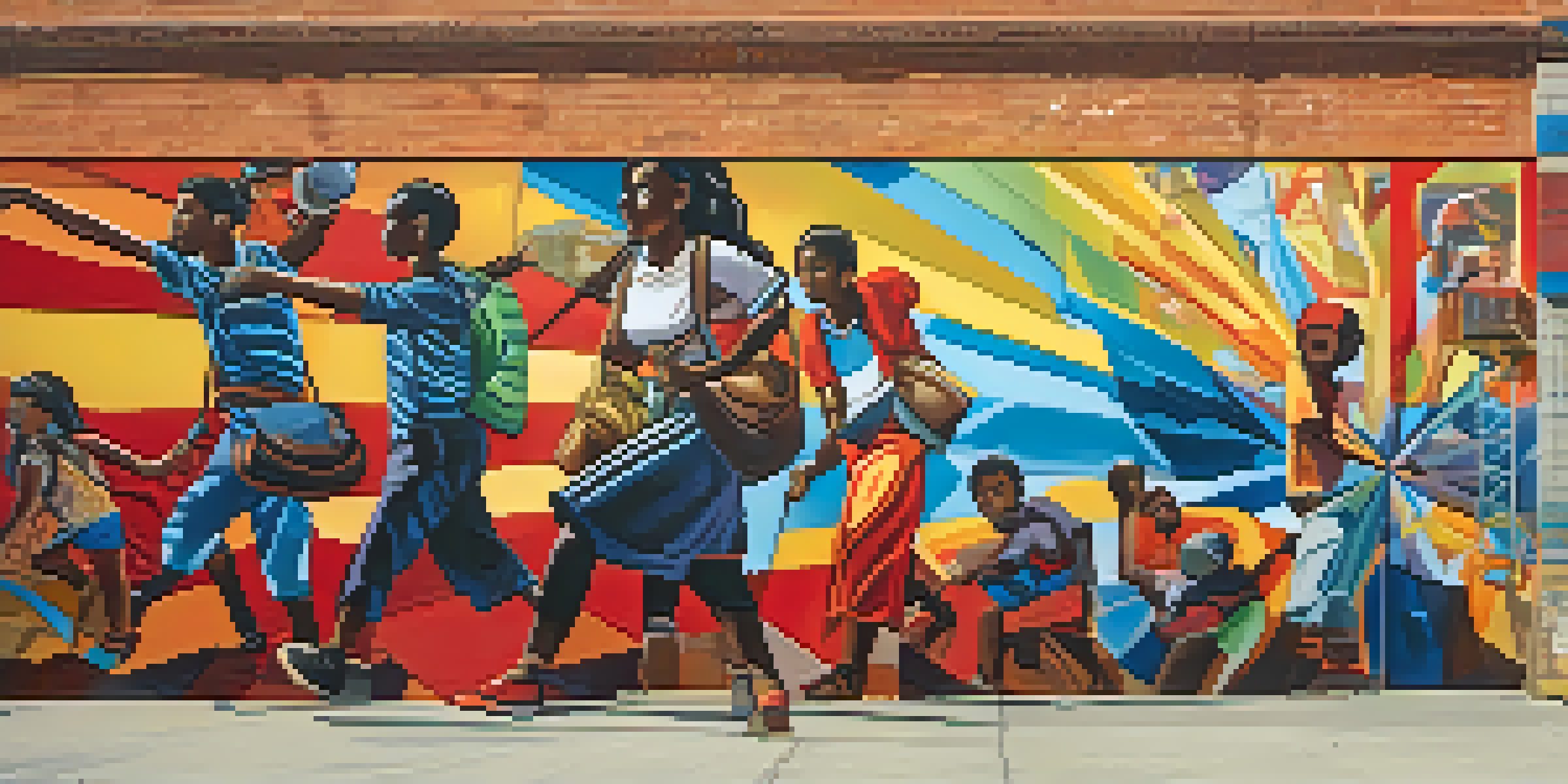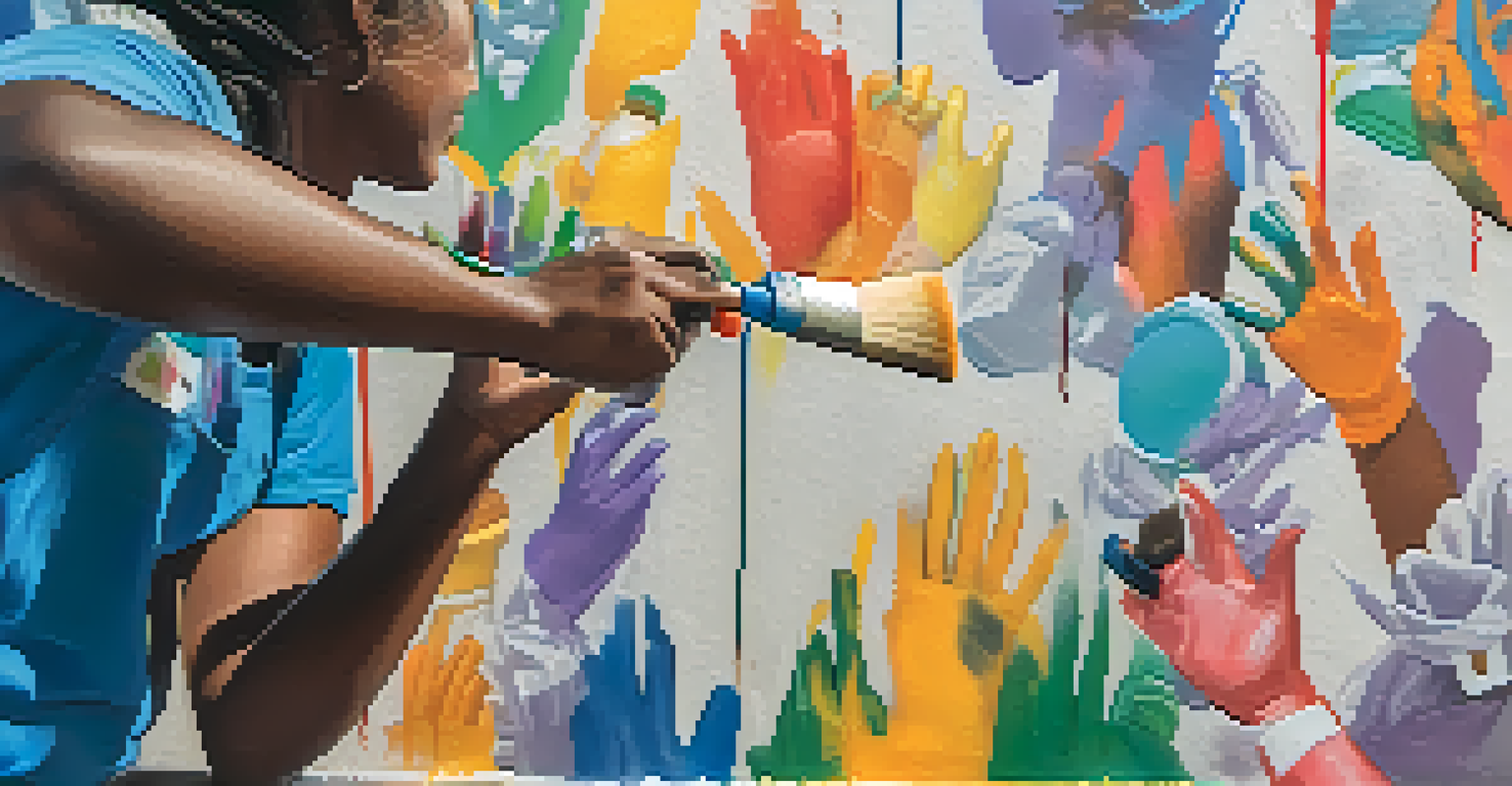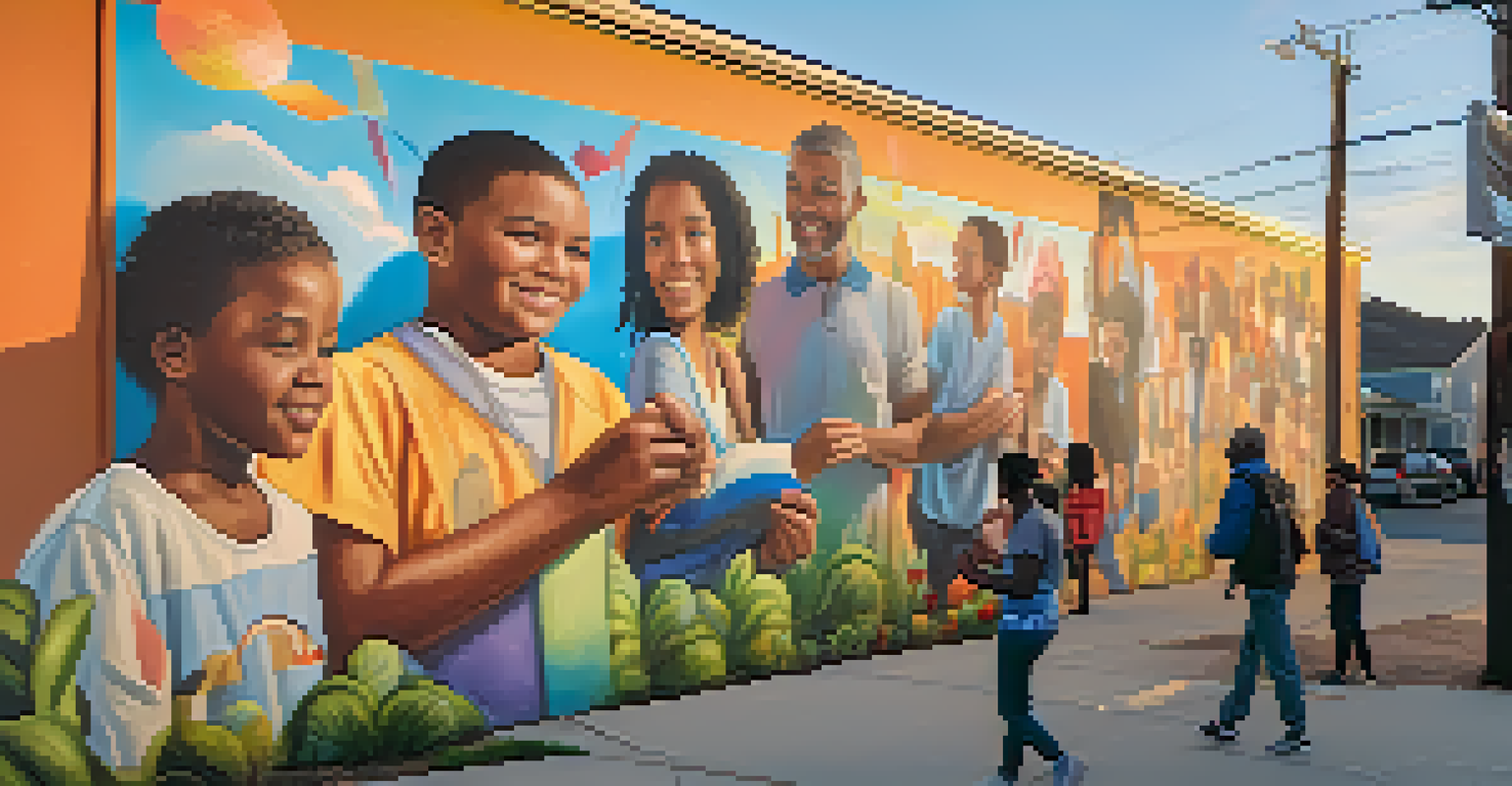The Use of Murals in Social Justice Movements Today

Murals as a Voice for the Voiceless
Murals serve as powerful canvases for marginalized communities to express their struggles and aspirations. They transform blank walls into vibrant narratives that tell stories often overlooked by mainstream media. For instance, in many urban areas, murals depict the lives and experiences of local residents, giving them a platform to share their truth.
Art is the most beautiful of all lies; it is the most truthful of all truths.
These artistic expressions not only document the reality of social injustices but also foster a sense of community and belonging. When people see their stories reflected in public art, it creates a shared experience and can galvanize collective action. Murals can spark conversations that lead to greater awareness and mobilization around pressing issues.
Moreover, the visual nature of murals makes them accessible to everyone, transcending language barriers and educational disparities. A striking image can evoke emotions and provoke thoughts, making art a universal language in the fight for social justice.
Historical Context of Murals in Activism
The use of murals in social justice movements is not a new phenomenon; it has historical roots that trace back to the Mexican muralists of the early 20th century. Artists like Diego Rivera used murals to depict the struggles of the working class and indigenous people, inspiring future generations to use art as a form of activism. This rich history underscores the enduring power of murals to convey political messages.

In the United States, murals have played a significant role in movements such as civil rights, labor rights, and more recently, Black Lives Matter. These artworks often serve as a response to societal issues, highlighting the fight against racism, inequality, and oppression. They remind us that art can be a form of protest, challenging the status quo and advocating for change.
Murals Amplify Marginalized Voices
Murals provide a vibrant platform for marginalized communities to share their struggles and aspirations, fostering awareness and collective action.
As we look at contemporary movements, the legacy of these early muralists continues to inspire artists who use their craft to address today’s pressing social issues. The blend of art and activism remains a powerful tool for raising awareness and driving social change.
Murals in the Digital Age
In today's digital world, murals have found new life beyond the physical walls they adorn. Social media platforms allow these artworks to reach a global audience, amplifying their messages far beyond local communities. A mural painted in a neighborhood can go viral, sparking discussions and inspiring actions worldwide.
Every artist dips his brush in his own soul, and paints his own nature into his pictures.
Artists are increasingly using digital tools to enhance their murals, incorporating augmented reality and interactive elements. This fusion of technology and art not only attracts attention but also invites viewers to engage with the message on a deeper level. For instance, some murals come to life through apps, allowing people to explore the stories behind the designs.
This digital dimension expands the impact of murals, making them a critical component of modern social justice campaigns. By harnessing the power of the internet, artists can mobilize support, share resources, and connect with like-minded individuals across the globe.
Community Engagement Through Mural Projects
Murals often emerge from collaborative efforts within communities, fostering a sense of ownership and pride among residents. Community-engaged mural projects involve local artists and residents, ensuring that the artwork reflects their collective experiences and aspirations. This participatory approach empowers individuals to take an active role in shaping their environment.
Additionally, these projects often include workshops and discussions that educate participants about the social issues being addressed. By involving community members in the creation process, artists help cultivate awareness and dialogue around important topics. This engagement not only beautifies public spaces but also builds stronger, more resilient communities.
Art as Activism: A Historical Legacy
Historically rooted in activism, murals have consistently served as powerful tools for social justice, from the Mexican muralists to contemporary movements.
As these murals become part of the local landscape, they serve as constant reminders of the community's values and struggles. They can inspire future generations to continue advocating for social justice, creating a legacy of activism through art.
The Role of Murals in Healing and Resilience
In the aftermath of social upheaval or tragedy, murals can play a significant role in the healing process for communities. They provide a space for collective mourning while celebrating the resilience of those affected. For example, murals created in response to police violence often reflect both grief and hope, serving as a tribute to lost lives and a call for justice.
Art has the unique ability to process complex emotions, and murals can transform pain into powerful visual statements. They give people a way to express their feelings and experiences, fostering a sense of catharsis. This process of creating and viewing murals can help communities come together, reinforcing bonds and encouraging healing.
Moreover, these artworks can inspire hope and resilience, reminding communities of their strength and capacity for change. Murals become symbols of unity, motivating individuals to stand together in the face of adversity and work toward a better future.
Challenges Facing Murals in Social Justice
While murals can be a force for good, they also face several challenges in the realm of social justice. One significant hurdle is the risk of gentrification, where neighborhoods undergo rapid changes that can lead to the erasure of community art. As property values rise, local artists may be pushed out, and their murals may be painted over or replaced.
Additionally, not all murals receive the same level of support or recognition, particularly those that address controversial or sensitive topics. Some local governments and institutions may shy away from funding or promoting murals that challenge the status quo, limiting the reach of these important messages. This can stifle artistic expression and hinder the potential for change.
Digital Age Expands Mural Impact
In today's digital landscape, murals reach global audiences and incorporate technology, enhancing their role in modern social justice campaigns.
Lastly, the sustainability of mural projects can be a concern, as murals often require ongoing maintenance to remain vibrant and relevant. Without proper funding and community involvement, many murals fade over time, losing their impact and connection to social justice movements.
The Future of Murals in Social Justice Movements
As social justice movements continue to evolve, so too will the role of murals in advocating for change. Artists are increasingly exploring new techniques and mediums, blending traditional mural art with modern technology to create impactful visual narratives. This evolution ensures that murals remain relevant and engaging in a rapidly changing world.
Furthermore, as awareness of social issues grows, more communities are recognizing the potential of murals as a tool for activism. Grassroots organizations and local governments are beginning to support mural projects that address pressing concerns, fostering collaboration between artists and activists to amplify their messages.

Looking ahead, the future of murals in social justice movements is bright. As communities continue to unite through art, these murals will likely play an even more significant role in shaping public discourse and inspiring action for years to come.